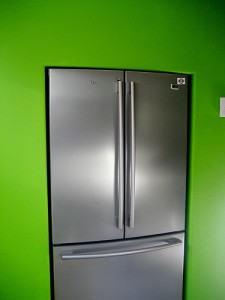
Those of us who are old enough to remember the 1970s will remember the energy guzzlers these machines were. But over the decades they have become more energy efficient and these days they consume a fraction of the energy they used to.
And this is going to get even better with the new Department of Energy efficiency standards that will cut the energy use of most new refrigerators by 25 per cent. The measure will help cut emissions, save consumers money, create jobs and spur innovation and investment, DOE said.
The Natural Resources Defense Council welcomed the move. “These new standards show that innovation can keep driving improvements even after decades of progress. New fridges do an even better job of keeping our food fresh and providing consumer amenity, yet they use only one-fifth the electricity they used to – and that means less pollution from power plantsâ€, said David Goldstein, energy program co-director at the NRDC.
The standards have been strengthened three times now since their enactment in 1987. The latest standards are based on a joint recommendation filed in 2010 with DOE by the groups and refrigerator manufacturers represented by the Association of Home Appliance Manufacturers.
DOE said that the 25 per cent savings builds on a long-term trend. A typical refrigerator in 2014 will use about one-fifth as much electricity as one from the mid-1970s. Even as refrigerator energy use has dropped, average units have gotten both larger and less expensive. The average new fridge today is about 20 percent larger and costs about 60 percent less than a 1970s-era unit.
The new standards take effect in 2014 and a typical fridge that meets the new standards will save $215 to $270 per year in electricity than a comparable unit which met the first state standards set in 1978.
According to DOE, the new standards over 30 years would save 4.84 quads of energy, or roughly enough to meet the total energy needs of one-fifth of all U.S. households for a year. Over the same 30-year period, and taking into account up-front costs, consumers will save up to $36 billion. Cool or what?
You should follow us here.






This is a great example of standards and technology advancements going hand-in-hand. As new standards are enacted to push innovation, technology moves forward to meet the demand and provide consumers with more efficient models. In this case, the technology continues to move past the standards. That in turn allows agencies to then establish even higher standards that strengthen those further advances and make them common place. We’ve had significant advances in fridges as well as lighting. Now to move toward pushing televisions even further.